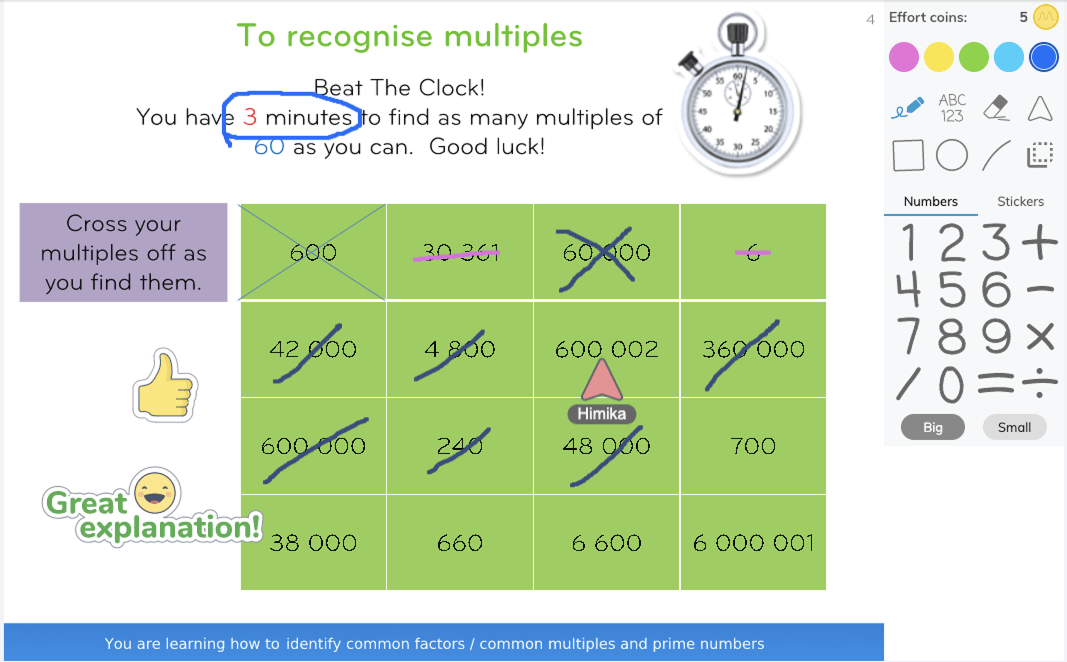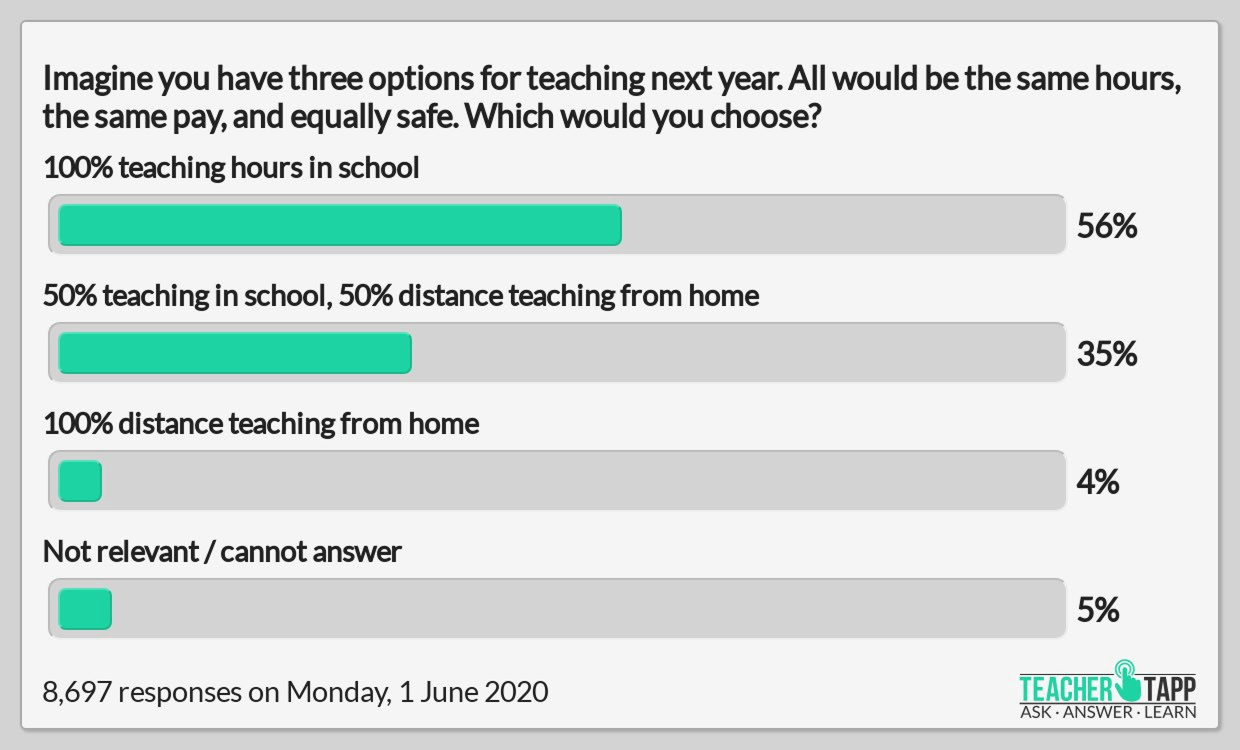How To Get The Best From Online Teaching: 12 Practical Tips For Teachers
)
Our tutors are trained maths experts who work one-to-one; usually in an intensive programme that doubles the rate of progress a child is making, but often also just to provide regular and sustained catch-up lessons to supplement what is happening in school.
You may not have the luxury of teaching one-to-one as you support your class from home, but whatever the ratio, there are some fundamental elements of good practice in online teaching and learning that it might help you to consider.
So here, we’ve turned what we’ve learnt so far into a list of 12 practical tips to make sure your online teaching is as effective and hassle free as possible.
- Technology is your friend but can also be your worst enemy. Make sure before you start that both your own device and the devices your pupils will be using are up to the demands you’ll be placing on them. For example, if your pupils only have mobile phones you will have to limit the visuals you can share with them. An audit check before you start is essential, and it’s worth seeing if you can access additional laptops if at all possible. The same goes for your wifi. Make sure it’s robust, especially if you’re going to be streaming live video.
- Before the first lesson check that your pupils all understand how the online system works. How do they raise their hand ? How do they ask a question ? Do they need to be muted throughout ? Agree these rules together and then make sure they’re written and clear for all to see. It might also be worth including guidance on turning on or off the audio and video.
- Run a practice lesson first (with a friend or your own child) using the lesson materials as live to make sure that you as the ‘host’ and leader of the session are familiar with both the technology and the new way of teaching. Practise writing on the screen / highlighting if that’s possible and also asking and answering questions. You will soon see how much you and the person you’re teaching will need to verbalise your responses. Nodding heads is no use if you can’t see each other.
- Do your best to play to the interests of the children you’re teaching as you would normally. As school staff members are redeployed to manage the children in school, the children you’re teaching may not already be familiar to you or with you. Building the relationship early on will reap rewards both in commitment to the online programme but also, importantly to attendance levels for the online teaching session.
- Plan for the first live online lesson with your new pupil or class to place limited cognitive demand in terms of content so that you can all focus on the new technology and new ways of learning and teaching. Children will take a while to realise that nodding or shaking their head is not a clear way to give a response. This way you’ll also be able to give lots of positive feedback and encouragement in this new environment which will help to build their confidence before you move on to something more challenging.
- We find the most effective way of doing online teaching is for the teacher to share their screen with slides on it and then both teacher and pupil can see and write on these slides. We’ve created a bespoke classroom with tools that allow us to do this but make sure that even your standard video conferencing solutions enable you to explicitly highlight the area of the slide you’re talking about or it’s easy for pupils to lose track.

Third Space Learning maths lesson slide
- Slide design is important. Never is dual coding more relevant than when you are unable to actually see how your slides are being responded to. Keep the slides simple, use visuals only where they help to explain a point. In maths before any lesson, make sure you’ve got the key visual aids to hand to bring in where needed eg fraction walls, place value charts, times tables grids. And don’t forget your concrete pictorial abstract stages - the bar model will still work brilliantly online.
- Share key vocabulary and learning objectives in advance. If your pupils are used to working with knowledge organisers upload this to your online classroom before the lesson and begin the shared expectations.
- Don’t be afraid to tackle the ‘tricky topics’. In maths, principally we mean don’t just work on pupils’ fluency. Maths reasoning and problem solving need to be part of every lesson; many pupils will have been out of the classroom for almost 6 months (or more) by the time they return and we cannot just postpone this aspect of their learning. Just as you would in class, make sure you have a range of reasoning questions available to develop their thinking and understanding.
- Follow principles of good teaching practice. With many pupils, and the expectations of an extended period of lockdown or interrupted schooling you may be spending some time in online teaching, so, as in face to face teaching you’ll need to guide their practice, model some activities, provide scaffolding, check for understanding, and provide plenty of independent practice too.
- Build in time for formative assessment before or after the lesson to gauge how much learning has taken place and where any gaps are. We use a calibrated diagnostic assessment tool before teaching to provide a personalised programme of lessons, but it’s possible to get a fairly accurate idea of knowledge learnt just from some low stakes google quizzes.
- When you’re creating your lesson sequences keep in mind the need to balance the learning of new content with some retrieval work. Whatever scheme of work you’re following, time spent refreshing a recent topic is never wasted.
Online teaching and online learning is now an established part of lesson delivery even if, as evidenced by TeacherTapp, most teachers would rather it were not so.

Source: TeacherTapp
After 6 years working with over 60,000 pupils, we think the benefits of teaching online far outway the disadvantages - and we expect to be doing a lot more of it to support schools in closing the attainment gap in September.
Of course it isn’t the same as your face to face teaching in the classroom.
But at its heart, it’s the same process - you, the expert, sharing what you know to spark interest and new knowledge and skills in your pupils. While these challenging times continue, we encourage you to embrace it for what it is and use these tips to get the best out of it.
If you are looking for additional support for children to catch up in maths, talk to us at thirdspacelearning.com.


)
)
)
)
)
)
)
)
)